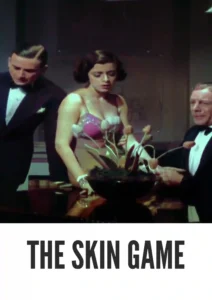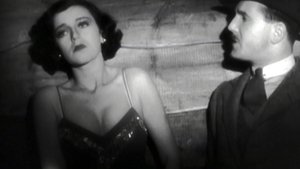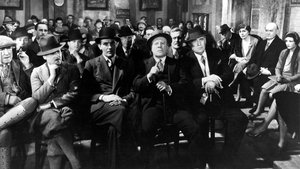Contact: [email protected]
Video Sources 0 Views
- The Skin Game


Synopsis
Table of Contents
ToggleReview: The Skin Game (1931) – A Compelling Exploration of Class Conflict and Morality

Introduction
“The Skin Game” (1931) stands as a gripping testament to the complexities of human nature and the clash of social classes in early 20th-century England. In this article, we’ll delve into the significance of this thought-provoking film, exploring its themes, performances, and enduring legacy in the realm of drama.
Check The Full Colorized Movies List
Check Our Colorized Movies Trailer Channel
Understanding The Skin Game 1931: Director, Cast, and Genre
Directed by the legendary Alfred Hitchcock, “The Skin Game” (1931) showcases his early mastery of suspense and psychological drama. The film features a talented ensemble cast, including Edmund Gwenn, Helen Haye, and Jill Esmond, who deliver powerful performances that bring the characters to life with depth and nuance. Blending elements of social commentary, family drama, and psychological thriller, “The Skin Game” (1931) captivates audiences with its exploration of moral ambiguity and ethical dilemmas.
Exploring the World of The Skin Game 1931: Plot and Characters
At its core, “The Skin Game” (1931) revolves around a bitter feud between two families of different social standings: the wealthy Hillcrists and the nouveau riche Hornblowers. As tensions escalate and old wounds are reopened, the characters are forced to confront their own prejudices and shortcomings, leading to a devastating climax that exposes the fragility of human relationships and the consequences of unchecked ambition.
The Art of Film Colorization
While “The Skin Game” (1931) was originally filmed in black and white, the decision to release a colorized version highlights the film’s enduring relevance and timeless appeal. By adding color to the film’s richly detailed world, colorization offers viewers a fresh perspective on Hitchcock’s early work, enhancing the visual experience and drawing audiences into the heart of the narrative with vibrant hues and nuanced shading.
Early Colored Films: A Brief History
The history of colored films stretches back to the early days of cinema, with filmmakers experimenting with various techniques to add color to their creations. From hand-tinted frames to early Technicolor processes, the evolution of colored film has been marked by innovation and creativity, paving the way for the development of modern colorization techniques that continue to captivate audiences to this day.
The Skin Game 1931 and Its Early Colored Version
The decision to release “The Skin Game” (1931) in a colorized format offers audiences a fresh perspective on Hitchcock’s early masterpiece, allowing viewers to immerse themselves in the film’s richly detailed world in a way that was previously unimaginable. By adding color to the film’s stark landscapes and intricate set designs, colorization breathes new life into Hitchcock’s vision, offering viewers a deeper appreciation for the film’s timeless themes and enduring relevance.
The Debate Over Film Colorization
As with any colorized classic, the decision to release “The Skin Game” (1931) in a colorized format has sparked debate among cinephiles and purists alike. While some argue that colorization enhances the visual experience and introduces classic films to new audiences, others maintain that it compromises the artistic integrity of the original work and detracts from the director’s intended vision. As the debate rages on, viewers are left to ponder the merits and drawbacks of colorization in the ever-evolving landscape of cinema.
Examining The Skin Game 1931 as an Early Colored Film
The impact of colorization on “The Skin Game” (1931) is a matter of personal interpretation, with some viewers praising its ability to breathe new life into Hitchcock’s early masterpiece, while others express reservations about the potential impact on the film’s visual aesthetic. Regardless of one’s stance on the issue, there’s no denying the enduring power of “The Skin Game” (1931) as a thought-provoking exploration of morality, class conflict, and human nature that continues to resonate with audiences around the world.
Influence and Legacy: The Skin Game 1931’s Impact on Cinema
“The Skin Game” (1931) has left an indelible mark on the world of cinema, inspiring countless filmmakers and captivating audiences with its timeless themes and unforgettable characters. From its masterful direction to its stellar performances, the film continues to serve as a touchstone for filmmakers seeking to explore the complexities of human relationships and the moral dilemmas that confront us all.
Director’s Cinematic Legacy: Beyond The Skin Game 1931
Alfred Hitchcock’s influence extends far beyond “The Skin Game” (1931), with a diverse body of work that continues to captivate audiences around the globe. From “Psycho” to “Vertigo,” Hitchcock’s films are celebrated for their psychological depth, suspenseful storytelling, and innovative camera techniques, solidifying his legacy as one of the greatest directors in cinematic history. Through his groundbreaking work, Hitchcock has left an indelible imprint on the world of cinema, inspiring generations of filmmakers to follow in his footsteps.
Themes Explored in The Skin Game 1931
“The Skin Game” (1931) explores a myriad of themes, from the corrosive effects of greed and ambition to the resilience of the human spirit in the face of adversity. Through its richly drawn characters and compelling narrative, the film invites viewers to ponder the nature of morality and the complexities of human relationships, challenging us to confront our own prejudices and shortcomings in the process.
Reception and Controversy Surrounding The Skin Game 1931
Upon its release, “The Skin Game” (1931) received widespread critical acclaim, with many praising its incisive commentary on class conflict and its powerful performances. However, the decision to release the film in a colorized format sparked controversy among purists, reigniting the age-old debate surrounding film preservation and artistic integrity. Despite the controversy, “The Skin Game” (1931) remains a beloved classic that continues to resonate with audiences of all ages, reaffirming its status as a timeless masterpiece of the drama genre.
Where to Watch The Skin Game 1931 Online
For those eager to experience the timeless magic of “The Skin Game” (1931), the film is readily available on popular streaming platforms such as Netflix, Amazon Prime, and Hulu. Whether you choose to watch it in its original black and white format or the early colored version, “The Skin Game” (1931) promises to captivate and enthrall with its gripping storytelling and unforgettable characters.
FAQs About The Skin Game 1931
Q: Is “The Skin Game” (1931) based on a true story? A: No, “The Skin Game” (1931) is a fictional tale crafted by renowned playwright John Galsworthy, whose works often explored themes of class conflict and social injustice.
Q: Who are the main actors in “The Skin Game” (1931)? A: “The Skin Game” (1931) features a talented ensemble cast led by Edmund Gwenn, Helen Haye, and Jill Esmond, whose powerful performances bring the characters to life with depth and nuance.
Q: What awards did “The Skin Game” (1931) win? A: While “The Skin Game” (1931) did not win any major awards, it received critical acclaim for its incisive social commentary and powerful performances.
Q: Why was “The Skin Game” (1931) released in a colorized format? A: The decision to release “The Skin Game” (1931) in color was made to introduce the film to a new generation of viewers and enhance its visual appeal for modern audiences. While the choice to colorize the film sparked debate among purists, it ultimately allowed “The Skin Game” (1931) to reach a wider audience and ensure its continued relevance in the annals of cinematic history.
Conclusion
“The Skin Game” (1931) stands as a testament to Alfred Hitchcock’s early brilliance as a director and storyteller, offering audiences a gripping exploration of morality, class conflict, and human nature. Whether viewed in its original black and white format or the early colored version, the film continues to captivate and enthrall with its timeless themes, unforgettable characters, and masterful direction. As we reflect on the enduring legacy of “The Skin Game” (1931), let us celebrate its status as a timeless classic that continues to resonate with audiences of all ages, reaffirming its place in the pantheon of cinematic greatness.




















